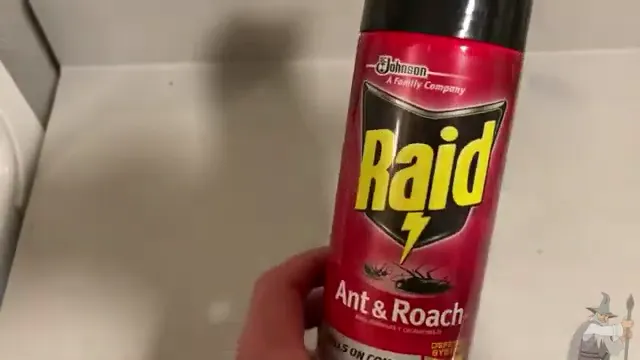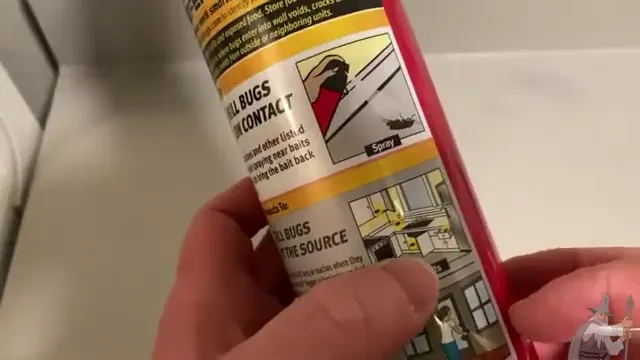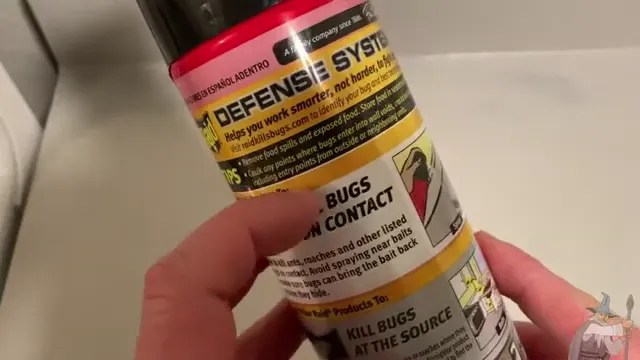Ant infestations are more than just a nuisance. They can compromise the hygiene of your home, lead to food contamination, and in some cases, even damage structures. Over the years, numerous solutions have been devised to tackle these pesky invaders, with Raid emerging as a household name in the world of insecticides.
Yes, Raid does indeed kill ants. The quick answer is that when applied correctly, Raid can effectively eliminate ant colonies, targeting both the ones you see and the ones you don’t. Its active ingredients are specifically designed to target the nervous system of ants, leading to their swift extermination.
The efficacy of Raid isn’t just limited to a specific type of ant. Whether you’re dealing with the common household ant, carpenter ants, or the stingy fire ants, Raid has a proven track record. It’s essential to understand its working mechanism, the types of ants it affects most, and how to apply it for optimal results.
What is Raid?
Raid has been a household name for decades, often associated with the fight against various pests, especially ants. But what exactly is Raid, and what makes it such a sought-after product?
Origin and History of Raid
The raid made its entry into the insecticide market in the early 1950s. The brand, owned by SC Johnson, quickly gained popularity due to its efficacy in controlling various pests, including ants. Its name, Raid, evokes a sense of urgency and action, resonating with homeowners who sought swift solutions against unwelcome insects.
Common active ingredients found in Raid products
Raid’s effectiveness primarily comes from its blend of active ingredients. Some of the notable components in many Raid products include:
- Imiprothrin: An insecticidal compound that acts on an insect’s nervous system, rendering them paralyzed before death.
- Cypermethrin: Another neurotoxin, it affects the sodium channels in insects’ nerve cells, leading to overstimulation and death.
- Pyrethroids: A class of synthetic chemicals that mimic the natural insecticidal properties of chrysanthemum flowers.
These ingredients, often in combination, ensure that pests are targeted and eliminated effectively.

How Raid Targets Ants
The power of Raid lies in its meticulously designed formula. The process through which it exterminates ants is both fascinating and effective.
Mechanism of action: how it affects ants
When ants come into contact with Raid, either through ingestion or direct exposure, the active ingredients disrupt their nervous systems. The chemicals block the regular transmission of nerve impulses, leading to paralysis and eventual death. It’s a rapid action mechanism, ensuring ants are incapacitated soon after contact.
Immediate vs. delayed effects on ant colonies
Raid products not only offer immediate results but also work on a delayed mechanism to target entire colonies. When worker ants are exposed to Raid, they carry trace amounts back to their nests. This “domino effect” ensures that the insecticide reaches deep into colonies, affecting ants that are often hidden from view, including the queen. Over time, this leads to the extermination of the entire colony.

Types of Ants Raid Can Kill
Raid is versatile and effective against a broad spectrum of ant species. It’s this versatility that has cemented its position as a go-to solution for homeowners.
Common household ants
Common household ants, often tiny and black or brown, are the most frequently encountered ants in homes. They are attracted to sugary substances and can often be seen trailing in kitchens. Raid is highly effective against these ants, ensuring they don’t overrun your living spaces.
Carpenter ants
Unlike the common household ants, carpenter ants are larger and can be damaging as they bore into wood to create their nests. They don’t eat wood like termites but can weaken structures over time. Raid can help curb these ants, protecting your home’s structural integrity.
Fire ants
Known for their painful stings, fire ants are a menace in many gardens and lawns. They create mounds and can be aggressive when disturbed. Raid provides a potent solution against fire ants, ensuring your outdoor spaces remain comfortable and sting-free.
Exceptions or resistant species
While Raid is effective against a wide range of ant species, there might be a few exceptions. Some ant populations, due to repeated exposure to insecticides, can develop resistance. In such cases, alternative solutions or repeated applications might be required. Always monitor the situation after using Raid to ensure complete eradication. If problems persist, consulting a pest control expert is advisable.

Advantages of Using Raid
Quick results
In the realm of ant control, Raid’s reputation is well-earned. One of its most lauded features is the speed at which it acts. Minutes after application, ants begin to show signs of distress, leading to swift extermination. This rapid action provides homeowners with immediate relief from infestations.
Versatility: various forms and applications
Raid isn’t a one-size-fits-all product. The brand offers a range of solutions tailored to different needs:
- Aerosol sprays: Ideal for direct application on ant trails or nests.
- Baits: Designed to be carried back to the colony, ensuring deep-rooted extermination.
- Gels: Great for cracks and crevices, ensuring ants are targeted in their hidden habitats.
This versatility allows users to select the best Raid product for their specific ant problem.
Safety measures for users
The raid, while potent against ants, has been formulated keeping user safety in mind. Products come with clear instructions and warning labels. When used as directed, they pose minimal risks to adults, children, and pets. Additionally, the brand provides safety data and resources to ensure informed usage.
Potential Drawbacks
Short-term vs. long-term solutions
While Raid provides immediate results, it may not always serve as a long-term solution. Ants can relocate their nests, and without addressing root causes like food sources or entry points, re-infestation can occur. It’s essential to pair Raid usage with preventive measures for enduring results.
Environmental concerns
Chemical insecticides, including Raid, can have environmental implications. When used outdoors, there’s potential for chemicals to leach into the soil or water sources. This can harm non-target organisms and disrupt ecological balance.
Resistance development in ants
Repeated use of any insecticide can lead to resistance in target pests. Over time, certain ant populations might become less susceptible to Raid’s active ingredients. This necessitates higher doses or alternative methods for effective control.
Alternatives to Raid
Natural repellents and deterrents
For those seeking greener solutions, several natural methods deter ants:
- Lemon or cucumber slices: Their natural acidity disrupts ant trails.
- Diatomaceous earth: A natural mineral that physically harms ants, leading to their death.
- Peppermint oil: Its strong scent acts as a deterrent.
Other commercial ant killers
The market is awash with ant control products. Brands like Terro, Combat, and Ortho offer various solutions, from liquid ant baits to granular ant killers. Depending on the nature of the infestation, these can be equally effective.
DIY home solutions
Simple home remedies can sometimes be surprisingly effective:
- Borax bait: A mix of borax, sugar, and water can attract and poison ants.
- Cornmeal: While ants consume it, they can’t digest it, leading to their death.
- Soapy water: Directly sprayed on ants, it suffocates them.
Application Tips
Best times to apply Raid
Timing can enhance the efficacy of Raid:
- Evening: Ants are most active during cooler parts of the day, making evenings ideal.
- Post-rain: After rain, ants are more likely to forage for food, increasing exposure.
Precautions to ensure effectiveness
For optimal results:
- Clean up food sources to ensure ants primarily get attracted to the Raid product.
- Seal entry points to prevent new ants from entering.
- Follow product instructions meticulously.
How to store Raid safely
Safety in storage is crucial:
- Store in a cool, dry place away from direct sunlight.
- Keep out of reach of children and pets.
- Ensure the cap or nozzle is secured to prevent accidental discharge.
FAQs
How does Raid kill ants?
Raid contains active ingredients that target the nervous system of ants. When ingested or contacted, these chemicals disrupt the normal functioning of ants, causing paralysis and death.
How long does it take for Raid to work?
Raid acts fast. Most ants will die within minutes of direct contact. However, for entire colonies, it might take a few days to achieve complete extermination as ants carry the poison back to their nests.
Can Raid harm pets or children?
While Raid is designed to target pests, it contains chemicals that can be harmful if ingested or inhaled in large amounts. It’s crucial to keep Raid out of reach of children and pets and to use it as directed.
Do I need to vacate the room after applying Raid?
It’s recommended to ventilate the room after using Raid. While it’s not always necessary to vacate, it’s a good idea to keep pets and children away from freshly sprayed areas until they’ve dried.
Conclusion
Is Raid effective against all ant species?
Raid is effective against most common household ants. However, some species or larger colonies might require repeated applications or alternative solutions.
Managing ant infestations is vital for maintaining the cleanliness and safety of our living spaces. With the plethora of solutions available in the market, Raid has consistently proven its efficacy against these tiny invaders.
Its active ingredients, designed to target the nervous system of ants, ensure that the problem is dealt with at the source. Not only does it address the visible ants, but its residual action tackles hidden colonies, bringing about comprehensive extermination